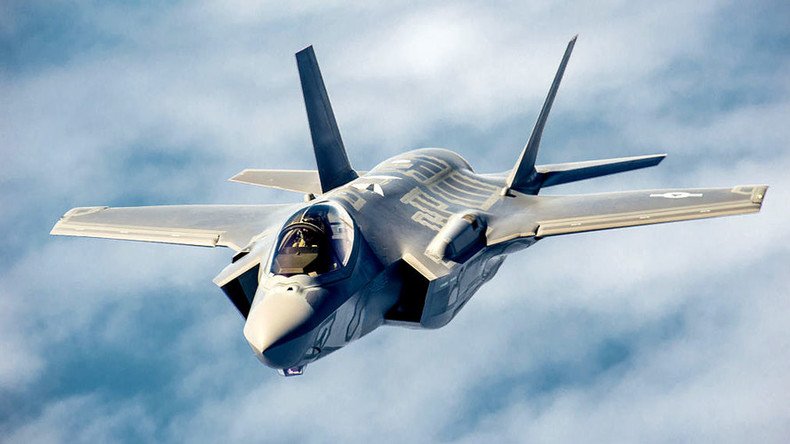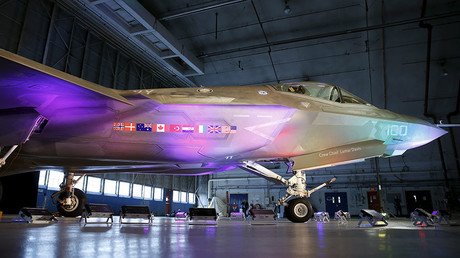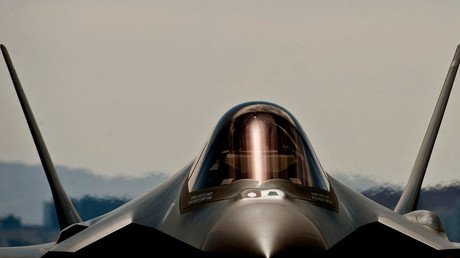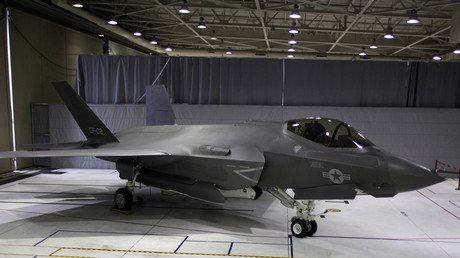’Scandal and tragedy’: Lawmakers blast F-35 failures

While still considering the F-35 Joint Strike Fighter the future of US air power, some Senators are grumbling about its sliding schedules and poor performance, even as the costs of the most expensive weapons program in US history spiral out of control.
Envisioned as the replacement for four different combat aircraft, the F-35 was supposed to share the majority of components between three configurations aimed at the US Air Force (USAF), the Navy and the Marine Corps (USMC). It was also supposed to be a stealthy, agile and sophisticated fighter jet with the latest computer guidance systems.
“The F-35 program’s record of performance has been both a scandal and a tragedy with respect to cost, schedule, and performance,” Arizona Republican John McCain, chairman of the Senate Armed Services Committee, said at a hearing about the F-35 on Tuesday, calling it a “textbook example” of the need to reform the “broken” defense acquisition system.
The original delivery schedule promised 1,013 jets in all three configurations by the end of 2016. “In reality,” McCain noted, “we will have 179.”
The planes that have been delivered have a list of problems “as troubling as it is long.” Since the Air Force, the Navy and the Marines all counted on the F-35s that never appeared, “combat aircraft and strike fighter capacity shortfalls in all three services have reached critical levels, severely impacting readiness.”
The F-35 was intended to replace four types of aircraft operated by all three branches of the US military, the A-10 Warthog, F-16 Falcon, F-18 Hornet, and the AV-8 Harrier. The total cost of the program has been estimated at $1.4 trillion over its lifetime.
Tuesday’s hearing had a near-identical cast of witnesses as last month’s session before the equivalent House committee. Michael Gilmore, the Pentagon’s director of operational test and evaluation, listed a litany of software, hardware, testing and maintenance problems with the F-35 program, adding that the current plans for its modernization were “not executable” and needed to be revised to reflect reality. Michael Sullivan of the Government Accountability Office (GAO) recommended once again that the modernization program – called Block 4 – be treated separately, for the sake of greater congressional oversight.
On the other hand, Air Force Lt. General Christopher Bogdan, executive officer for the F-35 program, maintained that the multitude of troubles encountered by the jet were mere setbacks being handled by Lockheed Martin, the principal contractor on the program. The F-35 is “making solid progress in all areas,” Bogdan and the Pentagon’s Undersecretary for Acquisition, Technology, and Logistics, Frank Kendall III, said in a joint testimony.
USAF general says F-35 appearance at air shows will be 'deterrent'https://t.co/addIQQ4aIDpic.twitter.com/1bvdKUSb9z
— RT America (@RT_America) April 8, 2016
Despite the ongoing problems with the jet’s radar, avionics and targeting systems, the Pentagon is proceeding with plans to feature the F-35 at several air shows this summer, including two flagship events in the UK. Meanwhile, the House Armed Services Committee has earmarked $1.5 billion for eleven F-35s that were cut from the 2017 military budget proposal (NDAA), shifting their cost to the Overseas Contingency Operations (OCO) account. President Barack Obama had vetoed the initial 2016 NDAA citing the use of OCO to skirt the sequester measures passed in 2013.















